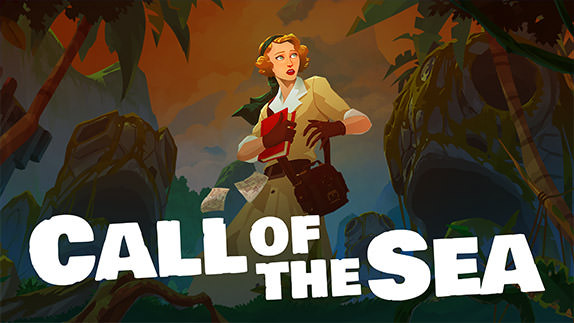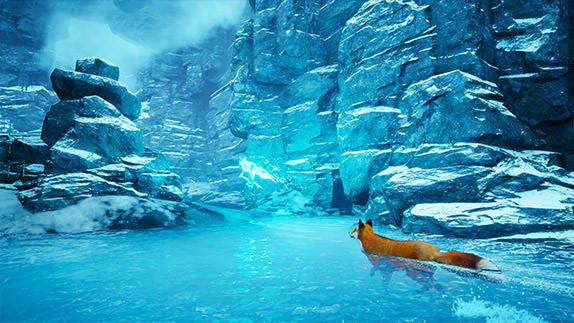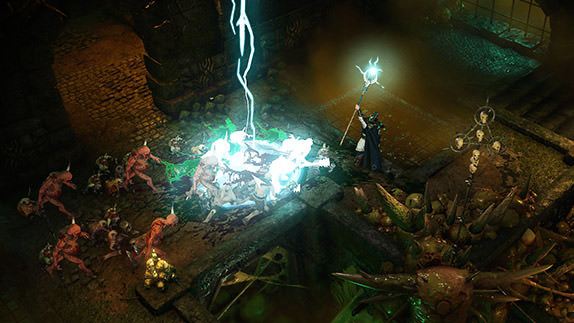Homeworld Remastered Collection Review

 By Kevin Mitchell
Posted on March 11, 2015
By Kevin Mitchell
Posted on March 11, 2015
As a remaster of what many call a classic franchise, I was initially cautious on how to approach two titles that are responsible for my infatuation with space. I'll admit I played more of the middle child in the franchise, Homeworld: Cataclysm, although due to the misplacement of many original files for the game, Gearbox chose to leave it out of the Remastered Collection. Although some titles may feel out of place due to major differences between games released today and those from years ago, I was pleased to see that the gameplay in Homeworld still holds true.
The Homeworld Remastered Collection technically contains two versions of each game since both the original versions of the game are included along with the vibrant looking Remastered editions. Gearbox did make some updates to the formula of the originals and some of these are welcome and others leave you scratching your head. Gone is the hardcore requirement of managing fuel, minimizing the risks of sending your fleet to the far reaches of any map. You will now have to stay on your toes managing any of your support ships as they aren't able to perform their duties on their own. Repair ships also no longer have the intelligence to repair ships within the same group, requiring you to manually order it to repair individual ships. The sphere formation, which was everyone's favorite in the original, no longer functions as it once did. Fighters set in the formation no longer will surround larger capital ships when guarding. Instead all of the ships including the capital ships must be selected first and then given the order to change formation. Using the AI and pathing system from Homeworld 2 in Homeworld causes occasional issues, but for the most part the game operates within reason.
Due to the largely Homeworld 2 feel of Homeworld, it makes for a smooth transition when booting into the sequel. There are key differences and depending on your view, they may be for the better or worse. I was always on the side the enjoyed Homeworld 2 for what it is. Fighters are no longer individually crafted and are instead built as full squadrons. The upgrade paths were much improved over the original, giving you more to spend your credits on. The most significant advancement, something seen more frequently today, is the targeting of various components systems are individual ships. This became extremely useful as disabling the engines on enemy frigates stops them from escaping or heading straight for the Mothership.
I always had a soft spot for watching my ships dock at the end of a mission, remembering those that were lost to careless maneuvers on my part or failed strategies. Largely due to the fact units are carried over to the next mission, I grew attached. I found myself (and I think everyone did at the time) watching fighters head towards enemy ships, encircling the camera around them with zoom set to max. Even when engagements occurred, it was a thing of beauty to watch insignificant ships battle, maneuvering back and forth through vibrant color effects. Don't forget: the game isn't set on a 2D plane and using the Z-axis to your advantage can be beneficial. It can pose issues for those unfamiliar with the controls of the game, but it shouldn't take long for anyone to become acclimated.
Although the ending credits song by YES is no longer included, Homeworld Remastered Collection uses the original source audio from both games,once again creating a unique and stunning experience. After completion, you'll no longer have to scour the edges of space to collect all of the resource and instead they are automatically collected upon mission completion. Of course, you can search for everything on the map as the missions will remain available in Homeworld until you dock with the Mothership. It's a time consuming process, but you will end up with more resources since the auto-collect fails to pick up everything.
The multiplayer is still in the beta stage, requiring you to sign up if you are looking to help test and shape the online community of the game. As big of a multiplayer fan as I am, I appreciated the story-driven narrative more than the multiplayer skirmishes in Homeworld 2 and don't see myself changing my views once the component exits the testing phase. Instead of keeping both games separate, Gearbox has combined both games, allowing you to take control of any of factions in either games. The unification of the multiplayer make sense, especially when you consider Homeworld plays very similar to Homeworld 2 in this collection.
Simply Put
It has been over 15 years since the original Homeworld was released, and within that time many games have attempted to build upon the success without much aplomb. Homeworld Remastered Collection stands the testament of time allowing a new audience to experience what began over 15 years ago, and had every gamer looking into the night sky.
Note: Homeworld Remastered Collection was reviewed on PC. A digital copy of the game was provided by the publisher/developer.




